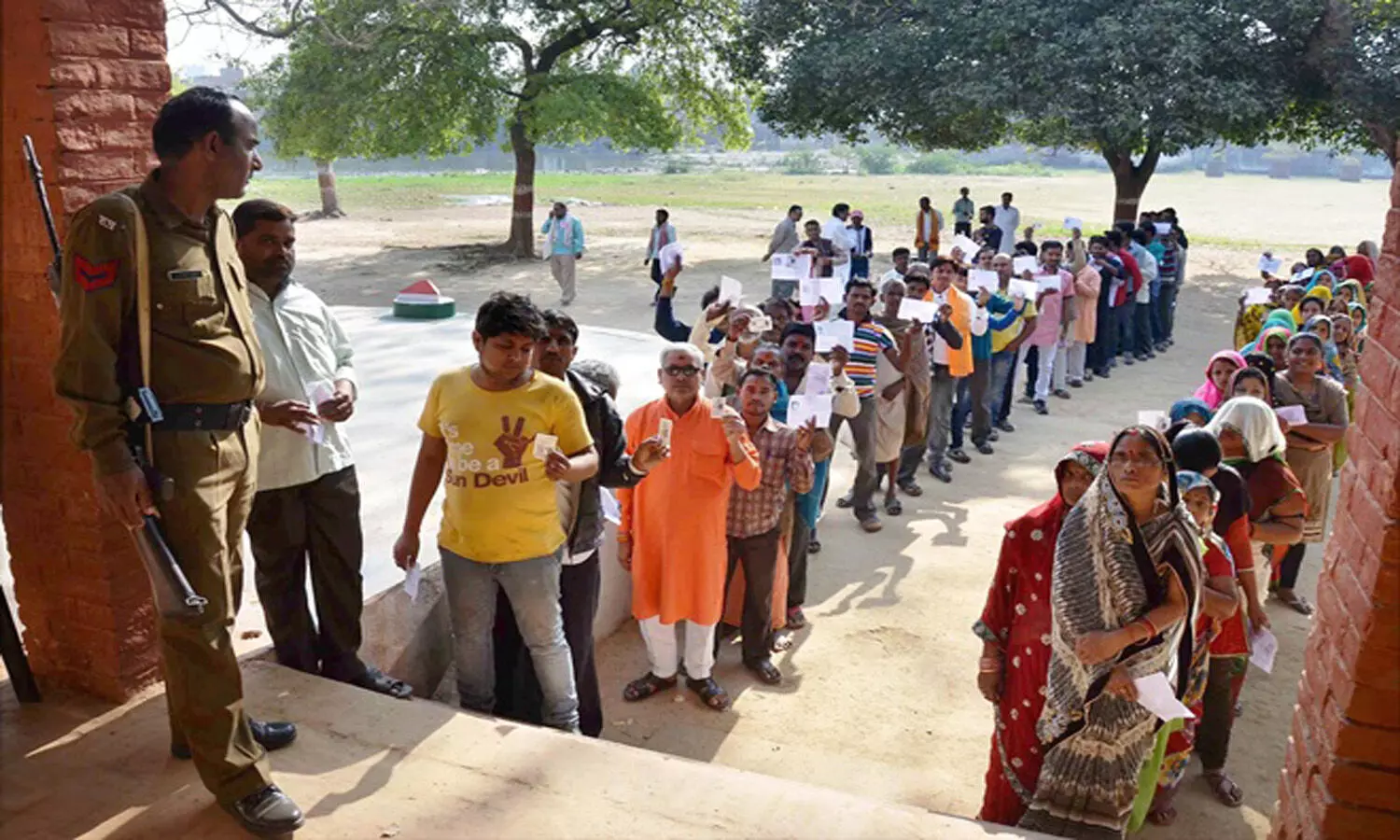TRENDING TAGS :
What happens if no party wins a majority in the Uttar Pradesh election?
If the Bharatiya Janata Party replicates its 2017 performance, its position in the Rajya Sabha will be much stronger in the 2018 biennial elections.
The assembly elections in the five states are most crucial in Uttar Pradesh since it is the most populous state in the nation. It sends the most representatives not just to the Lok Sabha, but also to the Rajya Sabha. If the Bharatiya Janata Party replicates its 2017 performance, its position in the Rajya Sabha will be much stronger in the 2018 biennial elections. If the BJP loses the state, the morale of its organization and workers will plummet, and Narendra Modi's leadership would be called into question.
However, there is a third possibility in which the Assembly gets hung. Such gatherings are typically favorable to the BJP. He takes advantage of his political and economic influence to manipulate the government.
It has an effect. It has also formed its own administration many times by parting with the main party. Madhya Pradesh is the most recent example of this, therefore the BJP is no longer concerned about a hung Assembly. Yes, since it has fewer MLAs, it will be unable to send more MPs to the Rajya Sabha elections.
In Uttar Pradesh, assembly elections were conducted against a context that was not favorable to the BJP. She suffered a humiliating loss in West Bengal, and her image as the victor was shattered. The BJP's strength in western Uttar Pradesh was damaged as a result of a lengthy farmers' struggle. The Lakhimpur Kheri tragedy had further harmed him politically. Last year, during the second wave of Corona, the state was devastated, and the Yogi government was severely impacted. Rising inflation and unemployment in the nation were also sabotaging the BJP's chances.
As a result, many people anticipate that the BJP will lose and that the main opposition party, the Samajwadi Party, together with its coalition allies, would win an absolute majority. Those who think this, however, overlook the fact that, although the mood has shifted against the BJP, Akhilesh Yadav has yet to emerge as a major leader. Mulayam Singh Yadav led the 2012 election campaign, and following his victory, Mulayam appointed Akhilesh as Chief Minister. The Samajwadi Party has been defeated in every election since 2012. Akhilesh has moved out of his father's umbrella in 2017. In that regard, his party's failure continued in the 2019 election.
This time around, there is no particular excitement among voters for Akhilesh in the election. Akhilesh's election rallies draw large audiences of Yadavs and Muslims, but his popularity outside of these two populations is severely low. Furthermore, votes from persons other than Muslims and Yadavs are required to win the polls. He has collaborated with Om Prakash Rajbhar, Swami Prasad Maurya, Krishna Patel, and the 'Mahan Dal' to extend the socioeconomic basis of the Samajwadi Party, although no one can claim success among their castes. Yes, Akhilesh reaps the benefits of anti-BJP sentiment.
It is taking place. People who don't like them have joined them. This time, in particular, they have the complete backing of Muslims. Though the Samajwadi Party was the first choice of Muslims in the 1993 elections and in subsequent elections, the amount of Muslim votes received by the Samajwadi Party this time has never been the same. According to estimates, the Samajwadi Party will get at least 90% of Muslim votes.
Despite the harsh environment, there is no error in dismissing the BJP as out of the race. The BJP is treading carefully not just on the Kamandal card, but also on the Mandal card. Ram Mandir's politics is a farce, and the BJP's win in Uttar Pradesh is due to its ability to maintain an impenetrable fortress of caste equation. Non-Yadav OBCs are the Bharatiya Janata Party's core social base, and they account for around 40% of forward caste votes. With this number of votes, he has a majority of more than three-fourths. Despite the fact that his status among the Brahmins of the advanced castes has weakened this time, more than 75 of them remain loyal to him. The BJP is still the main option among non-Yadav Owasi castes.
Handed Mayawati's weakened position, the BJP has given a considerable number of Jatavs tickets this time. Those tickets were distributed in the seats designated for Scheduled Castes. The BJP is expecting that this time the Jatavs would vote in large numbers for them.
Clearly, the BJP has weakened, but it is not out of the battle for power. In previous elections, it received 40 to 42 percent of the vote. Even if her vote percentage falls from 35 to 33, she will either have a simple majority or be very close to it. It doesn't matter whether she obtains a majority, but she didn't, and if the assembly remains hung, it has the capacity to create the government.
The Samajwadi Party, on the other hand, will need to gather 202 or more people on its bicycle emblem to establish a government, since the history of its affiliates has been one of opportunism. What are the views of MLAs from Mahan Dal, Apna Dal (Krishna Patel), Om Prakash Rajbhar's party, and others? Even Jayant Chaudhary of the Rashtriya Lok Dal is skeptical. They may join the BJP if the equation favors.
And if the Samajwadi Party fails to get a majority even with its coalition, no one can prevent the minority BJP from assuming the government. Mayawati will have easy access to her MLAs. On March 10, it will be revealed whether or not the findings will be released. However, the potential of a hung parliament cannot be ruled out entirely.



